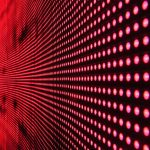Digital interfaces
I’ve talked about how “its not the mic.” But what about another critical part of your Audio chain? When it comes to Digital interfaces, (that thing you plug your mic into?) How it handles its duties can make a big difference in your sound. Most of it bad. Its amazing how one little thing can grind your voice over business to a halt.
They come in all shapes and sizes, and from simple to complex functionality. Also from dirt cheap to taking out a second mortgage. (Discuss how moderate priced ones are all you need.)
PC MAC iOS. Just remember, more bells and whistles something has, the more that can go wrong with it.
For some reason, people are having trouble with their digital interfaces. We’re hearing buzzing and humming and what we like calling “Cyloning.”
It worked great yesterday, why is it going nutty today? Its easy to say its a bad unit, take it back. But thats the rare exception. Usually its something quite simple.
But lets go back and talk about what your digital interface does.
Its job is three fold. First, its a microphone “Pre-Amp.” It takes the low level signal from your microphone and amplifies it so it can process a louder signal. This is probably where the manufacturer makes the biggest difference with these units.
The second thing it does, is take that amplified, analog, modulated signal and converts it to ones and zeros. The language your computer understands.
It also directs the amplified signal and routes it to your monitor speakers and/or your headphones.
Usually a DI can handle these chores day in and day out without as much as a hiccup.
And then something goes wrong. And its usually something simple.
Then we have to troubleshoot. First thing, change the USB cable, especially if your not using the one that came with it. Also make sure that you don’t plug the USB cable into an external multi-port adapter or “Buss.” They don’t like that. another way is to try a spare (Which you should have) like a mic port PRO and see if that works. That at least tells us it is the unit. And miraculously, especially with PC’s when you reconnect the old unit, it starts to work. some time it just needs reminding.
Experience tells me that 9 times out of ten its the cable. if your convinced its the unit, call the manufacturer or get on their support website. They’ll give you specific parameters to play with like buffering or bit rates.
Other times, especially with PC’s, it may be the driver, and that’s a completely different discussion.
That’s why I say keep it simple. 1 and zeros are ones and zeros, and a high priced Digital interface makes little difference in how your sound, except if its broken or not set up right.
Ask the Home Studio Master a question!



